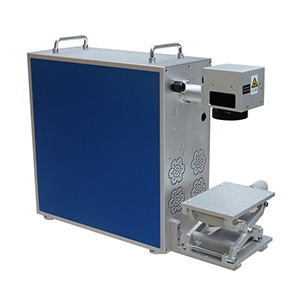What is a Laser Machine?
A laser machine is a machine that uses laser technology for cutting, engraving, welding, marking, and other processes. Its appearance has greatly improved the efficiency and quality of industrial production, and it is also widely used in medicine, communication, scientific research, and other fields. In this article, ATO will briefly introduce the basic principles of laser machines and their types.
The basic principle of a laser machine is to convert electrical energy or chemical energy into a laser beam, and then use optical elements such as optical lenses and mirrors to focus, expand, and reflect the laser beam, and finally concentrate the laser beam on the workpiece for processing. A laser machine is usually composed of a laser, an optical system, a workbench, a control system, etc.
The advantages of laser processing are high precision, fast speed, and no defects such as mechanical deformation. The processing object of the laser machine can be metal, non-metal, glass, plastic, or other materials. In the field of industrial manufacturing, laser machines can be used in metal cutting, welding, drilling, marking, cutting non-metallic materials, and other processing technologies. In the medical field, laser machines can be used in eye surgery, skin removal, dental beauty, and other fields. In the field of scientific research, laser machines can be used in nano-processing, precision measurement, optical experiments, and other fields.
 Basic principles of laser machines
Basic principles of laser machines
The working principle of the laser machine is based on the generation of the laser and the amplification of the power. A laser is a monochromatic, unidirectional, coherent, high-energy-density light beam whose wavelength is usually in the range of infrared, visible, ultraviolet, etc. There is an active medium in the laser transmitter, such as gas, solid, liquid, etc., which will generate photons after being excited by the energy, and these photons will be continuously reflected in the spectrum tube to form a laser beam. The laser beam is focused and oriented through optical devices such as lenses and mirrors and finally reaches the laser processing area to complete operations such as cutting and engraving.
The laser machine is processed by the beam generated by the laser. The principle of lasers is to convert the original photon energy into photons of the same frequency, direction, and coherence by generating stimulated radiation in the substance. When these photons merge in the same direction, a very strong laser beam can be formed.
The light source for laser machines usually uses gas, solid-state or semiconductor lasers. Different lasers have different wavelengths and powers, which can be selected according to needs. The laser beam is emitted from the laser and focused on the surface of the workpiece through a convex lens or mirror, so that the surface of the workpiece is locally heated, so as to realize the processing of the material.
Types of laser machines
The type of laser machine can be classified according to parameters such as different working substances of the laser or different wavelengths of the laser. Here are a few common types of laser machines:
- Gas laser machine: The collision between gas molecules is used to excite the laser, such as carbon dioxide laser and helium-neon laser. Gas laser machines have the advantages of high power, high efficiency, and high stability, and are often used in applications such as cutting, welding, drilling, and engraving.
- Solid-state laser machine: Uses the energy level structure of solid materials such as crystal or glass to generate lasers, such as Nd: YAG (Neodymium-doped Yttrium Aluminium Garnet; Nd: Y3Al5O12) lasers and rubidium steam lasers. Solid-state laser machines have the advantages of high power, high repetition rate, and long life, and are often used in materials processing, medical and scientific research, and other fields.
- Semiconductor laser machine: Uses the PN structure of semiconductor materials to generate laser light, such as laser diodes and vertical external cavity surface emitting lasers. Semiconductor laser machines have the advantages of low power, small size, and low cost, and are often used in applications such as communication, display, and optical storage.
- Fiber laser machine: Uses photons in optical fibers to produce lasers, such as fiber lasers and fiber amplifiers. The fiber laser machine has the advantages of high power, high beam quality, and long working life, and is often used in laser cutting, welding, medical and communication fields.
ATO currently has several types of fiber laser machines on sale. They are, respectively 20W portable fiber laser marking machine, which is a cost-effective portable fiber laser marking machine of faster marking speed and more sophisticated engraving effect. 20W all-in-one portable fiber laser marking machine, with a 20w output power, maintenance-free and long service life; 20W handheld fiber laser marking machine with excellent quality and reasonable price; 20W desktop fiber laser marking machine with integrated module design and maintenance-free; 20W economic cabinet type fiber laser marking machine with small size and faster marking speed.
In addition, there are laser machine types that are classified according to the laser wavelength, such as ultraviolet lasers, visible lasers, and infrared lasers. Different types of laser machines are suitable for different application fields, and users need to choose the right laser machine model according to their own needs.
In summary, as advanced processing equipment, laser machine has become indispensable tool in modern industry, scientific research, medical treatment, and other fields. With the continuous advancement of technology, laser machines will be more accurate, efficient, safe, and environmentally friendly.

